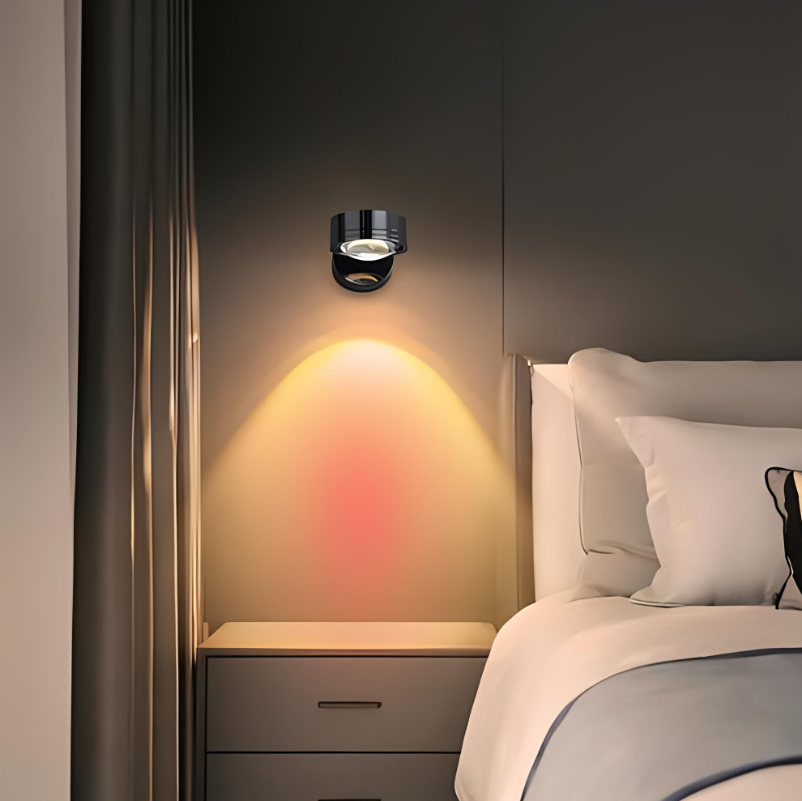Proper bedroom lighting is essential for creating a comfortable and relaxing environment in your bedroom. Lighting plays a crucial role in setting the mood, enhancing visual comfort, and promoting a good night’s sleep. The right lighting can transform your bedroom into a sanctuary where you can unwind, recharge, and rejuvenate.
The impact of lighting on our mood, health, and sleep quality should not be underestimated. Studies have shown that exposure to bright light during the day can improve mood and productivity, while dimmer lighting in the evening can help reduce stress and anxiety. Additionally, the quality and color temperature of light can affect our circadian rhythm, which regulates our sleep-wake cycles.
Key Takeaways
- Proper bedroom lighting can have a significant impact on your health and well-being.
- Lighting can affect your sleep quality, so it’s important to choose the right fixtures and color temperature.
- Natural light is crucial for a healthy sleep-wake cycle and overall well-being.
- Using lighting to create a relaxing environment can improve your mood and reduce stress.
- Energy-efficient lighting options can save you money and benefit the environment.
The Benefits of Proper Bedroom Lighting for Your Health and Well-being
Proper bedroom lighting offers numerous benefits for your health and well-being. Firstly, it can improve your mood and productivity. Bright light during the day stimulates the production of serotonin, a hormone that promotes feelings of happiness and well-being. This can help you feel more energized and focused throughout the day.
In addition to improving mood, proper bedroom lighting oxyxo can also reduce stress and anxiety. Soft, warm lighting in the evening can create a calming atmosphere that helps you relax and unwind after a long day. This can lower your heart rate and blood pressure, leading to a more peaceful state of mind.
Furthermore, proper bedroom lighting is crucial for better sleep quality. Exposure to bright light in the evening can disrupt your circadian rhythm and suppress the production of melatonin, a hormone that regulates sleep. On the other hand, dimmer lighting with warmer color temperatures can promote melatonin production and signal to your body that it’s time to wind down and prepare for sleep.
How Lighting Affects Your Sleep Quality
Lighting plays a significant role in regulating our sleep-wake cycles through its impact on our circadian rhythm. Our circadian rhythm is a natural, internal process that regulates our sleep-wake cycles and other bodily functions over a 24-hour period. It is influenced by external cues, such as light and darkness.
Exposure to bright light, particularly blue light, in the evening can disrupt our circadian rhythm and suppress the production of melatonin. Melatonin is a hormone that helps regulate sleep and wakefulness. When our circadian rhythm is disrupted, it can lead to difficulty falling asleep, staying asleep, or achieving restful sleep.
To promote better sleep quality, it is important to minimize exposure to bright light in the evening and create a dimmer, more relaxing environment in your bedroom. This can be achieved through the use of dimmable lighting fixtures and warm color temperatures.
Choosing the Right Lighting Fixtures for Your Bedroom
| Lighting Fixture Type | Recommended Location | Recommended Wattage | Recommended Color Temperature |
|---|---|---|---|
| Overhead Ceiling Light | Center of the room | 60-100 watts | 2700-3000K |
| Table Lamp | Nightstand or desk | 40-60 watts | 2700-3000K |
| Wall Sconce | Bedside or accent wall | 25-40 watts | 2700-3000K |
| Floor Lamp | Corner of the room | 60-100 watts | 2700-3000K |
When selecting lighting fixtures for your bedroom, there are several factors to consider. Firstly, you need to determine the purpose of each lighting fixture. Ambient lighting provides overall illumination for the room, while task lighting is focused on specific areas or tasks, such as reading or getting dressed. Accent lighting is used to highlight specific objects or areas, such as artwork or architectural features.
To achieve a balanced lighting scheme in your bedroom, it is important to incorporate all three types of lighting. This can be done through a combination of ceiling lights, table lamps, floor lamps, wall sconces, and pendant lights.
In addition to functionality, aesthetics should also be considered when selecting lighting fixtures. Choose fixtures that complement the style and decor of your bedroom. Consider the size and scale of the fixtures in relation to the room and furniture.
The Importance of Natural Light in Your Bedroom
Natural light has numerous benefits for our health and well-being. Exposure to natural light during the day can help regulate our circadian rhythm and improve sleep quality. It also boosts mood and productivity, enhances visual comfort, and provides a connection to the outdoors.
To maximize natural light in your bedroom, position your bed near a window or install larger windows if possible. Use sheer curtains or blinds to allow natural light to filter into the room while maintaining privacy. Avoid blocking windows with furniture or heavy drapes that can obstruct the flow of natural light.
For bedrooms that lack natural light or have small windows, there are alternatives to maximize brightness. Use mirrors strategically to reflect light and create the illusion of more space. Choose lighter paint colors for the walls and ceiling to reflect light and make the room feel brighter. Incorporate artificial lighting fixtures that mimic natural light, such as full-spectrum bulbs or daylight LED bulbs.
How to Use Lighting to Create a Relaxing Bedroom Environment

Proper lighting can help create a calming and soothing atmosphere in your bedroom. To achieve this, consider the following tips:
1. Use warm color temperatures: Warm white or soft white bulbs with color temperatures between 2700K and 3000K create a cozy and relaxing ambiance.
2. Install dimmers: Dimmers allow you to adjust the brightness of your lighting fixtures according to your needs and mood. This can help create a softer, more intimate atmosphere in the evening.
3. Layer your lighting: Incorporate multiple sources of light, such as ceiling lights, table lamps, and wall sconces, to create a layered lighting effect. This adds depth and dimension to your bedroom while providing flexibility in terms of brightness and functionality.
4. Use indirect lighting: Indirect lighting, such as wall sconces or uplighting, can create a soft, diffused glow that is less harsh on the eyes and promotes relaxation.
5. Avoid glare: Position lighting fixtures so that they do not create glare or shine directly into your eyes when lying in bed or performing tasks.
The Role of Color Temperature in Bedroom Lighting
Color temperature refers to the perceived warmth or coolness of light. It is measured in Kelvin (K) and can range from warm (yellowish) to cool (bluish) tones. The color temperature of light can have a significant impact on our mood and perception of space.
In the bedroom, it is important to choose the right color temperature to create a desired atmosphere. Warm white or soft white bulbs with color temperatures between 2700K and 3000K are ideal for creating a cozy and relaxing ambiance. Cool white or daylight bulbs with color temperatures between 3500K and 5000K are better suited for task lighting or areas where you need to be alert and focused.
Energy-Efficient Lighting Options for Your Bedroom
Energy-efficient lighting not only helps reduce your carbon footprint but also saves you money on energy bills. There are several energy-efficient lighting options available for your bedroom.
LED (light-emitting diode) bulbs are the most energy-efficient option. They use up to 80% less energy than traditional incandescent bulbs and last significantly longer. LED bulbs are available in a variety of color temperatures, making them suitable for different purposes in your bedroom.
Compact fluorescent lamps (CFLs) are another energy-efficient option. They use about 75% less energy than incandescent bulbs and last up to 10 times longer. CFLs are available in different color temperatures and can be used for both ambient and task lighting.
Tips for Properly Positioning Your Bedroom Lighting
Proper positioning of lighting fixtures is essential for optimal functionality and aesthetics in your bedroom. Consider the following tips:
1. Ceiling lights: Position ceiling lights in the center of the room to provide overall illumination. If you have a ceiling fan, choose a fixture that combines both lighting and fan functions.
2. Bedside table lamps: Place bedside table lamps on each side of the bed at a height that allows easy access to the switch. The bottom of the lampshade should be at eye level when sitting up in bed.
3. Task lighting: Position task lighting, such as reading lamps or desk lamps, at a height and angle that provides adequate illumination for the task at hand. Avoid placing task lighting directly behind you, as it can create shadows and glare.
4. Wall sconces: Install wall sconces at eye level or slightly above to provide soft, indirect lighting. Position them on either side of a mirror or artwork to highlight these features.
5. Accent lighting: Use accent lighting, such as spotlights or track lighting, to highlight specific objects or areas in your bedroom, such as artwork or architectural features.
Transform Your Bedroom with Proper Lighting
Proper bedroom lighting is essential for creating a comfortable and relaxing environment that promotes good sleep and overall well-being. By understanding the importance of lighting and considering factors such as color temperature, positioning, and energy efficiency, you can transform your bedroom into a sanctuary where you can unwind, recharge, and rejuvenate. Take the time to select the right lighting fixtures, maximize natural light, and create a soothing atmosphere that suits your personal style and needs. With proper bedroom lighting, you can create a space that truly reflects your personality and enhances your quality of life.


